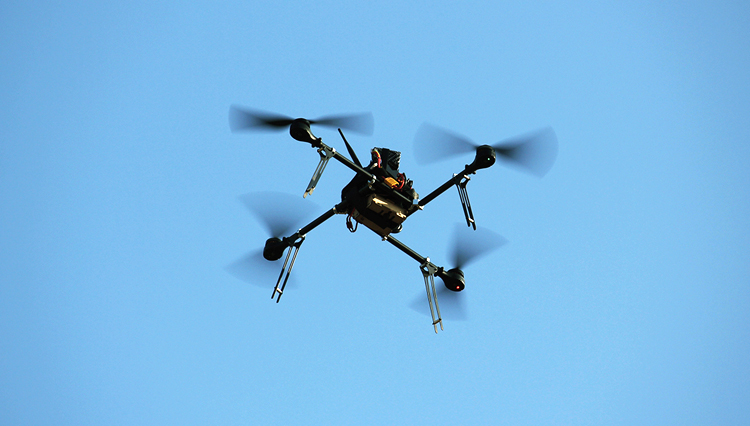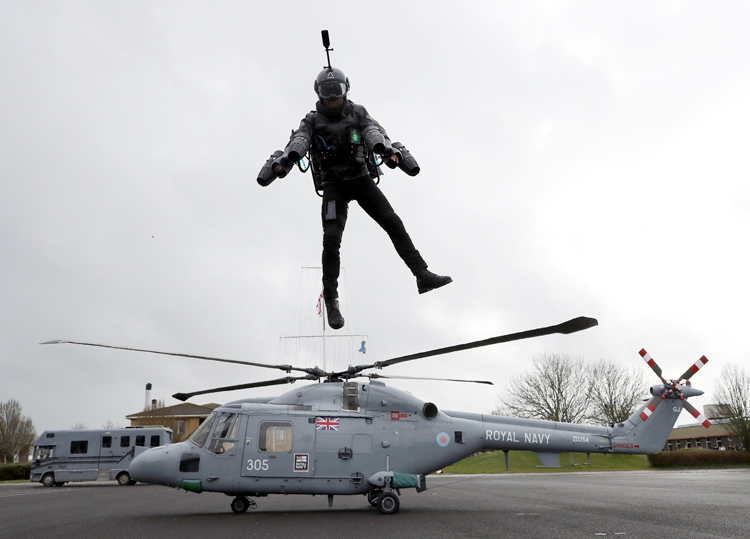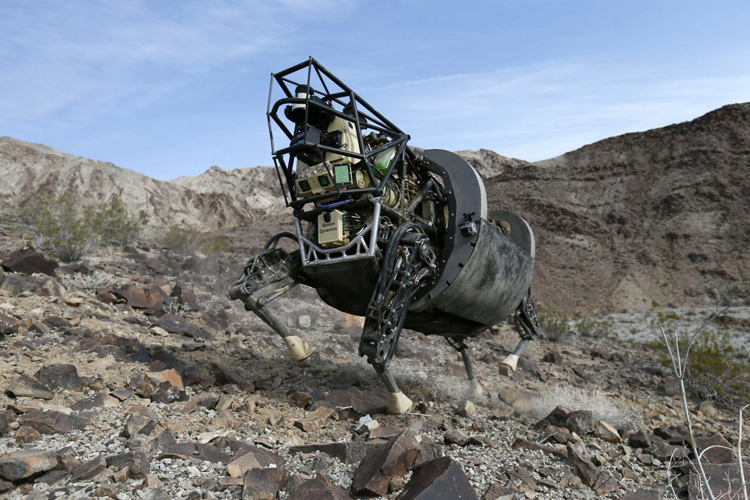INDIAN ARMED FORCES CHIEFS ON
OUR RELENTLESS AND FOCUSED PUBLISHING EFFORTS

SP Guide Publications puts forth a well compiled articulation of issues, pursuits and accomplishments of the Indian Army, over the years

I am confident that SP Guide Publications would continue to inform, inspire and influence.

My compliments to SP Guide Publications for informative and credible reportage on contemporary aerospace issues over the past six decades.
New-Age Drones, Jet Packs and Robotic Mules
The Army is seeking the above technologies in line with the need to modernise and upgrade its combat capabilities
 |
The Author is Former Director General of Information Systems and A Special Forces Veteran, Indian Army |

The Indian Army is set to procure 130 x new-age drone systems, 48 x Jet Pack suits and 100 x robotic mules. These three technologies are being acquired under emergency procurement through a fast-track procedure under the 'Buy-Indian' category. News reports of January 24, 2023 indicate that the Ministry of Defence (MoD) has sought technical and commercial bids for robotic mules, jetpack suits and tethered drones that can look beyond the line of sight to augment combat capability of the Indian Army.
The Army’s request for proposal (RFP) for 130 x new-age drone systems pertains to a tethered drone system; such drones are tethered to the ground using a cable that will be used to download data and give commands. The Army is seeking a drone with an all-up weight of 15 kg. The drone will be tethered to a base station on the surface with a 60 metre long cable. It should be capable of operating for six hours at a stretch and able to detect vehicles five km away and a person two km away.
With regard to the Jet Pack suit, it is a turbine based individual mobility platform, which can lift a man safely across varied terrain. The Jet Pack suit propels the wearer through the air and it uses gas or liquid to propel the user to fly. The suit must provide controls for safe ascent, safe descent, take off and landing and movement in all directions, the Army said in the RFP document.
Ministry of Defence has sought technical and commercial bids for robotic mules, jetpack suits and tethered drones that can look beyond the line of sight to augment combat capability of the Indian Army
The Army is seeking 48 x Jet Pack suits with modern propulsion systems (including turbine engines, electric and hybrid systems), which can be worn like a backpack and soldiers wearing it can fly across varied terrain. The Army is likely to use these for special operations. The weight of the jetpack must not exceed 40 kg. It should be able to carry an individual weighing 80 kgs and its maximum speed must not be less than 50 km/h.
For the 100 x robotic mules, the Army also has put out a RFP, according to which, the Army is looking for four-legged robotic mules capable of autonomous movement across various terrain, self-recovery and avoiding obstructions. The robotic mule should be one metre in length, weigh not more than 60 kg and should be able to operate at altitudes over 10,000 feet carrying 10 kg weight in autonomous mode and on pre-defined routes for over three hours.

Further, the robotic mule should be able to operate in temperature range of minus 20 degree Celsius to plus 45 degree Celsius and should be compatible with the European Union’s GNSS and India’s IRNSS satellite navigation system. The robotic mules would be a replacement for mules that transport goods and rations to some forward posts. Reduction in mules would automatically reduce the equivalent number of mule drivers enabling reduction in manpower.
The Army is seeking the above technologies in line with the need to modernise and upgrade its combat capabilities. Advantages of tethered drones include: operations within a limited spatial area restricted by the tether – negating requirement of a ‘trained’ pilot and GPS navigation; safe data transfer because of line of sight and uninterrupted links, and; overt deterrence to the enemy.
China had deployed machine gun wielding robot soldiers along the LAC and ‘Mule-200’ for the transportation of ammunition and cargo on the battlefield
Tethered drones offer several significant benefits, making this platform an indispensable tool for warfighting and first responders. Tethered drones and captive aerostats are both excellent tools for conducting aerial surveillance. Tethered drones are being used not only for border control and ISR (intelligence, surveillance and reconnaissance) tasks but also as a critical component of tactical communications including as tactical aerial telecommunications relay.
News reports of March 9, 2021 said that America’s Defense Advanced Research Projects Agency (DARPA) would pay up to $1.5 million in development costs for a powered Jet Pack system capable of quickly moving a single person; to enable troops zipping across the battlefield to fight in cities, rescue downed pilots, or enter or exit the battlefield. Reports of July 2021 stated that the US had tested Jet Packs, Pentagon was ready to equip US soldiers and intends to use them for special operations. The British Royal Navy has also tested Jet Packs for using them in swarms.

In December 2015 media reports emerged that the US military had reportedly shelved development of its robotic quadruped pack mule, Legged Support System or ‘LS3’, by Boston Dynamics, and there were no future experiments or upgrades planned since it made too much noise and would give away its location to the enemy. The predecessor of LS3 ‘BigDog’ was powered by a two-stroke go-kart engine, and a contract in 2013 to develop the LS3 at a cost of $10 million specified that it needed a quieter method of propulsion as well as the ability to resist gunfire. Apparently, noise remained a problem.
In April 2020, reports emerged that the robot ‘Sharp Claw’ developed by China North Industries Corporation (NORINCO) had entered service with the PLA. Subsequent reports indicated that China had deployed machinegun wielding robot soldiers along the LAC and ‘Mule-200’ (developed by Zhong Tian Zhi Kong Technology Holdings) for the transportation of ammunition and cargo on the battlefield. The Mule-200 is driven by a hybrid gasoline-electric engine and has a tracked chassis. The total weight of this robot is 500 kg. It has a range up to 50 km and has a maximum speed of 50 km/h.
The noise quotient of the above Chinese robots is not known. However, the Indian Army would have taken these into account, as well as why the US shelved LS3, whether quieter version of mule robots have been developed or whether noise would be irrelevant in areas where the mule robotic mules being procured are planned to be deployed.





